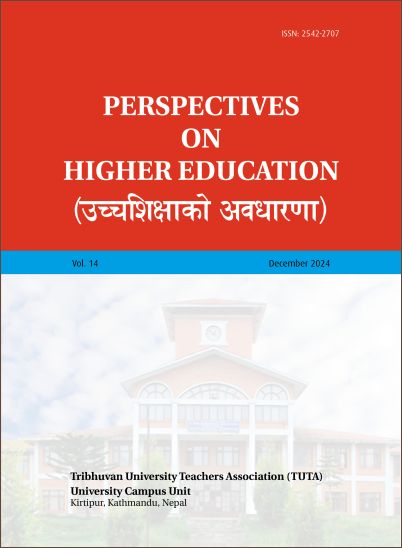Performing Lāthi Nāch to Tourists: Redefining Cultural Art
DOI:
https://doi.org/10.3126/phe.v14i1.76584Keywords:
Bhajaiti, Cultural art, Cultural tourism, Jhumrā, Lāthi nāch, Tharu cultureAbstract
Among the cultural sites, requiring the observation in the tourist and local culture relationship, one is the Tharu performance culture in Sauraha, particularly, the lāthi nāch. This paper explores the evolution of the Tharu lāthi nāch of a group, still, performing at Tharu Culture House in Sauraha, Chitwan. Several factors in the past had marginalized the Tharu performance culture. The paper reflects on the Tharu culture show performed at Tharu Culture House of Sauaraha from Richard Schechner’s perspective of cultural ceremony and ritual as art. Borrowing Schechner’s definition of art the paper argues lāthi nāch as a performance art, beyond indigenous cultural rituals and ceremony. And then the paper presents how various forms of the Tharus’ cultural performance art began to be called Tharu Stick Dance which has been performed every day for tourists, as one of the major activities, for over four decades. The paper’s objective is to redefine cultural performance as an art which has been considered mere ritual and ceremony thus far; the objective, at the same time, is to challenge Mike Featherstone’s argument that cultural tourism destroys local cultural identities rather than preserving and inventing news one. Thus, the Tharu cultural ritual and ceremony is redefined lāthi nāch as performance art, which has been popular in Sauraha as a major attraction called Tharu Stick Dance, the name collectively used for one show which includes distinct and diverse ritual and ceremonial items.




